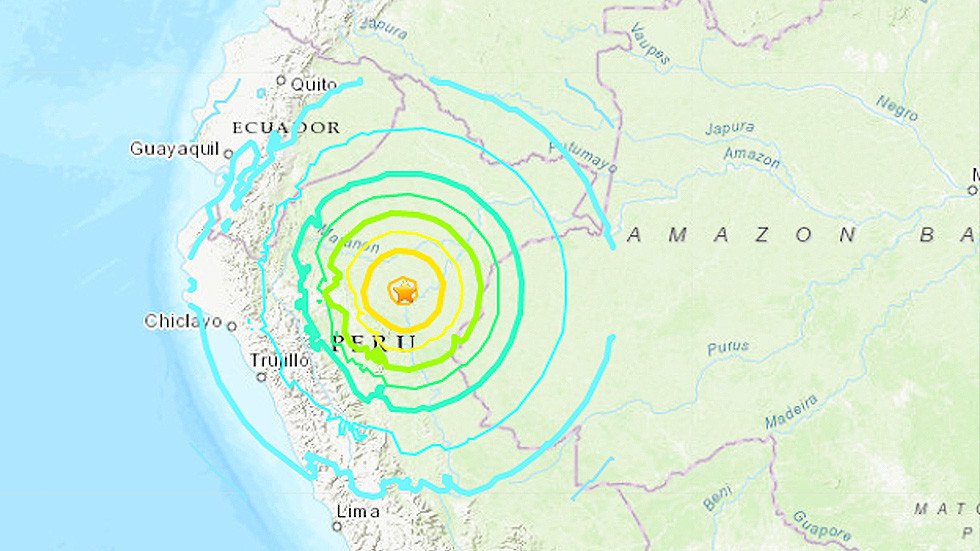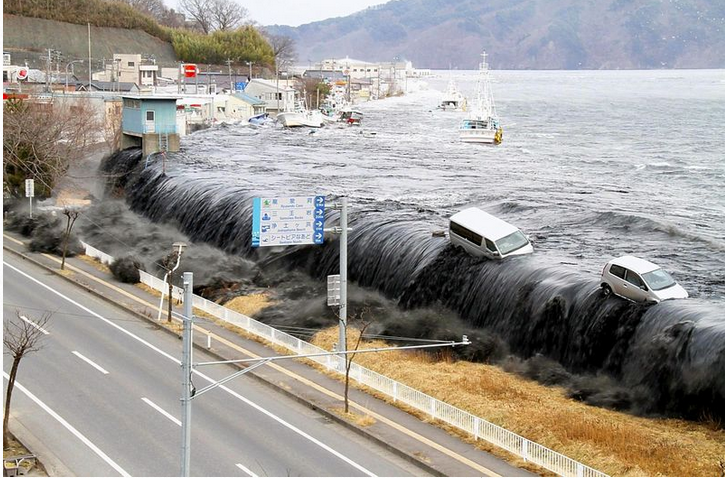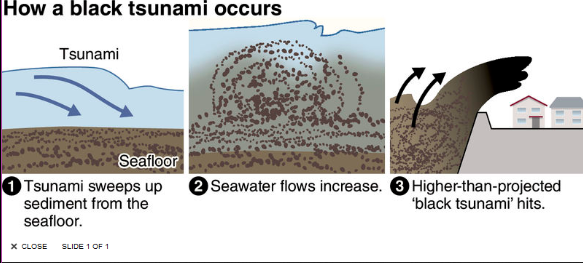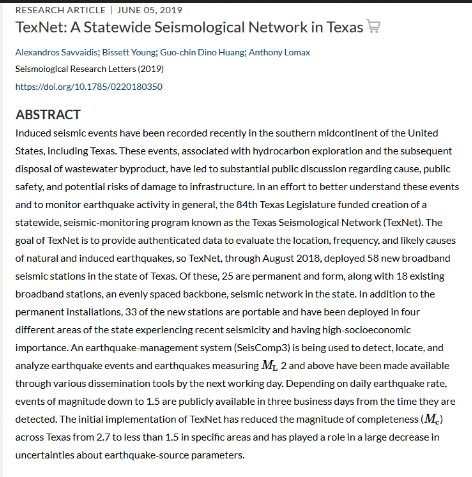Breaking news, opinion, in-depth stories on politics, business, society, sports, Cool Japan, culture, arts, entertainment, more.

the-japan-news.com
Courtesy of the Miyako city government An image from the Iwate Earthquake Tsunami Archive shows a black tsunami that hit Miyako, Iwate Prefecture, in March 2011.
7:11 pm, May 30, 2019
A possible major earthquake in the Nankai Trough could cause a “black tsunami” in Tosa Bay in Kochi Prefecture that would be higher than a government projection, according to a study by a group of researchers from Tohoku University, Kansai University and other institutions.
In the 2011 Great East Japan Earthquake, it is said that a black tsunami swamped bays and river mouths in Miyagi and Iwate prefectures and resulted in greater damage than an ordinary tsunami would cause. The study’s findings on the Nankai Trough quake, the focus of which could be in offshore areas ranging from the Tokai region to the Kyushu region, are likely to increase calls to strengthen measures against disasters.
The research team presented the findings at this year’s Japan Geoscience Union meeting in Chiba on Wednesday.
A black tsunami is one that contains seafloor sediment, among other things, and is likely to occur at such locations as ports and harbors and mouths of rivers, where sediment has accumulated. Such a tsunami is known for being heavier and more destructive than one containing mainly seawater.
The researchers, including Kei Yamashita, an associate professor of tsunami engineering at Tohoku University, calculated by computer the amount of sediment contained in black tsunami, based on cases such as one at Kesennuma Bay in Kesennuma, Miyagi Prefecture, which was hit by a tsunami surging about 10 meters high in the Great East Japan Earthquake.
After simulating how sediment would move from Tosa Bay in the Nankai Trough quake, the researchers found that the sediment, up to 10 meters in depth, would be swept up near the river mouth and hit the coast along with the tsunami.
The sudden removal of the sediment from the ocean floor would effectively make those areas deeper, allowing massive additional amounts of seawater to flow in, thus swelling the water-and-sediment tsunami to even greater size.
According to the research team’s mathematical simulations, the tsunami is projected to be about 13 meters high near the mouth of the Monobegawa river running through Nankoku and Konan in Kochi Prefecture, about two meters higher than the figure projected by the government, and about 12 meters high near the mouth of the Ni- yodogawa river in Kochi city, about one meter higher than a government projection. It is feared that the downtown areas in Kochi city could suffer more damage than the government has projected.
Makoto Okamura, a professor emeritus of earthquake geology at Kochi University, said: “Seafloor sediment has been discovered in deposits from past Nankai Trough earthquakes. The impact of black tsunami should be considered.”
Speech
 RT Spanish is reporting that according to USGS it is the strongest earthquake on the planet this year.
RT Spanish is reporting that according to USGS it is the strongest earthquake on the planet this year.
 www.rt.com
www.rt.com
 RT Spanish is reporting that according to USGS it is the strongest earthquake on the planet this year.
RT Spanish is reporting that according to USGS it is the strongest earthquake on the planet this year.




